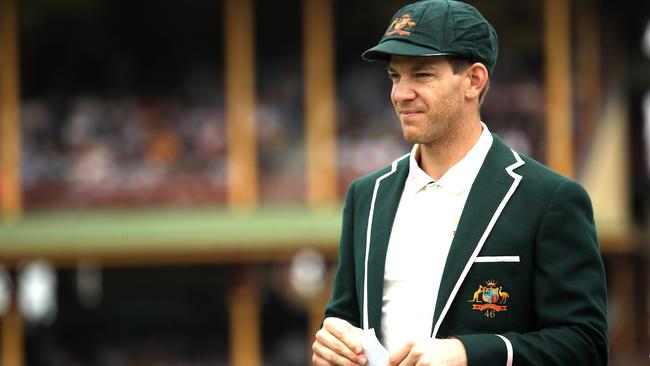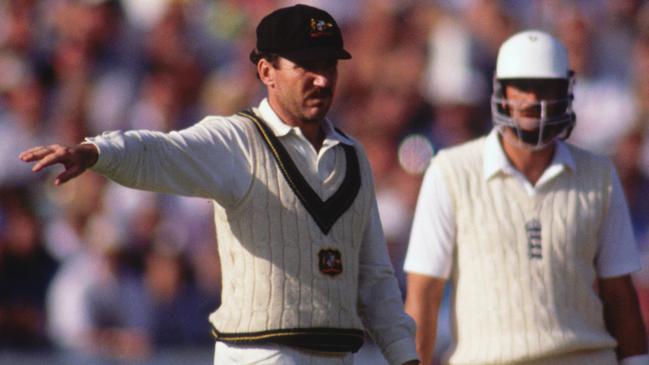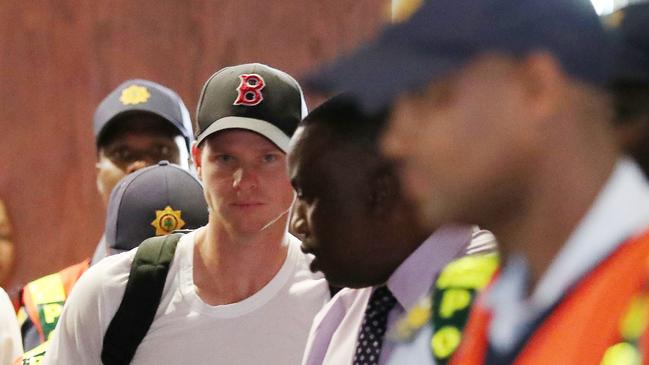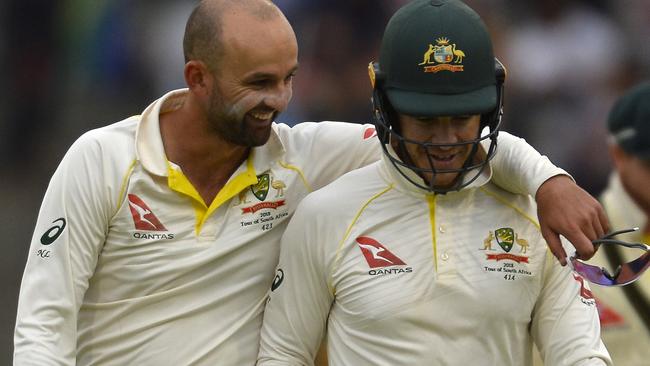Ian Chappell: Tim Paine following in footsteps of Allan Border by leading Aussie revival from the front
Just as Allan Border delivered when his country most needed him, current Test skipper Tim Paine’s innate calmness in a sea of churning emotions has served Australia well, says Ian Chappell.

Cricket
Don't miss out on the headlines from Cricket. Followed categories will be added to My News.
- First grade cricketer reclaims record father once held
- Million-dollar Marnus cashes in on epic summer
Australia has been better served by their cricket captains than any other country.
In general, the overall standard of Australian captaincy and the number of suitable candidates from which to chose has been in advance of other teams.
However, there have been two occasions when dire circumstances reduced the captaincy options to one — and Australia would’ve been in deep trouble if the candidate had failed.
Watch every single KFC BBL match LIVE & On-Demand on KAYO with FOX CRICKET’s unmatched commentary line-up. New to Kayo? Get your 14-day free trial & start streaming instantly >

The first time was when Allan Border took over from a frazzled Kim Hughes in 1984-85, and more recently when Tim Paine had the captaincy thrust upon him after Steve Smith’s abrupt dismissal in the wake of the ball-tampering fiasco in March 2018.
On both occasions Australia was going to rise or fall on the ability of their heavily burdened skipper to stay afloat as there were no other suitable candidates to take over if they failed.
In Border’s case, he was initially a reluctant captain — even offering to resign if things didn’t improve — but once he decided in 1989 to lead unconditionally, he did an excellent job.
In the intervening years, Border at least held firm as a batsman, showing the way with gritty determination when those around him were falling to pieces.
Ironically in that period, although Border craved speedsters to return fire against the world-beating West Indies, he was a good spin-bowling captain.
Despite the losses piling up in the early days, he engineered a number of unlikely victories on the tricky SCG surface.

Once he took the reins firmly in his hands in 1989, he led a resurgence that morphed into a golden era in Australian cricket.
In Paine’s case, it was his innate calmness in a sea of churning emotions after the Cape Town debacle that served Australia well.
Paine was fortunate to at least inherit an extremely strong Australian attack because a team rebuilds quickest with a bowling-led resurgence.
However, Paine’s undemonstrative demeanour and capable leadership has not only seen Australia emerge from the rubble of Cape Town to become a top-level team, it’s also resulted in their reputation rising from the depths to the heights.
Paine has overseen this resurgence with a quiet but steely resolve, a thoughtful approach and a splash of humour that helps relieve Test cricket’s tensions.
His quick wit was revealed at the SCG in the final Test against New Zealand. He was attempting to “buy” a wicket with Marnus Labuschagne’s part-time leg-spin when the bowler delivered a juicy full toss on the batsman’s pads. Labuschagne immediately requested the on-side field be strengthened in the deep. “What?” responded the skipper. “For the full ‘bunger’ outside leg stump?”

This even drew a shoulder-shrugging chuckle from the bowler.
In addition to keeping Australia firmly on the revival path, Paine has maintained a high standard with the gloves and has at times hinted at his potential with the bat.
Occasionally his innings have been prematurely terminated by a desire to accelerate the scoring rate in search of victory, but that is to be applauded as it shows the captain is not asking his players to do anything he’s not prepared to do himself.
Paine’s calm but calculating temperament showed out after the horrendous Headingley loss in 2019, when the gifted Ben Stokes guided England to the most unlikely of one-wicket victories.
A deflated Australia then quickly bounced back to ensure the Ashes remained in their grasp with a resounding 185-run win at Old Trafford.
Despite taking over in extenuating circumstances, Paine could take comfort from having previous captaincy experience. He did the job at junior levels, including leading the Australian Under-19 side at the 2004 World Cup.

Like all Australian captains, he enjoyed the advantage of learning the art in testing conditions.
The most difficult aspect of captaincy is figuring out how to show opposing batsmen you’re still trying to get them out even when they are well and truly on top.
This often happens on good Australian batting pitches and it can help develop the art of subtle field placings that a lot of visiting captains don’t grasp.
The highly competitive nature of Australian cricket — from the junior ranks, through club and the first-class competition — is also a great breeding ground for imaginative captaincy.
Paine has not only led a successful Australian side this summer, but in doing so he’s also given any potential successor time to grow as a player and develop as a leader.
Australian cricket is in Tim Paine’s debt because if he’d failed, the rebuild could’ve been a lengthy one.
